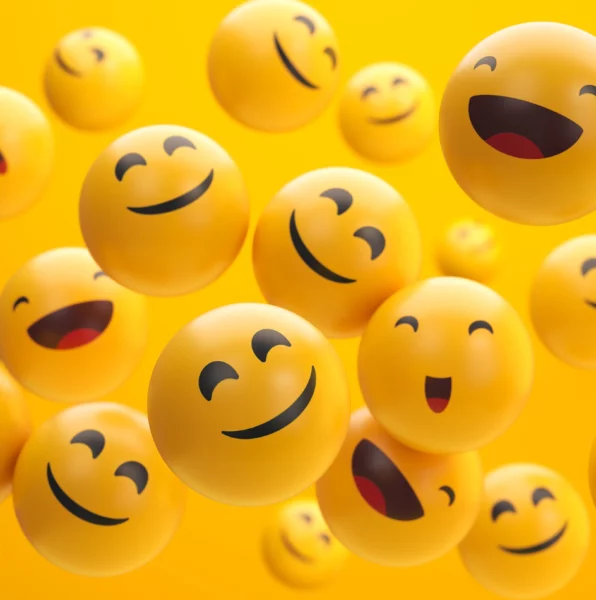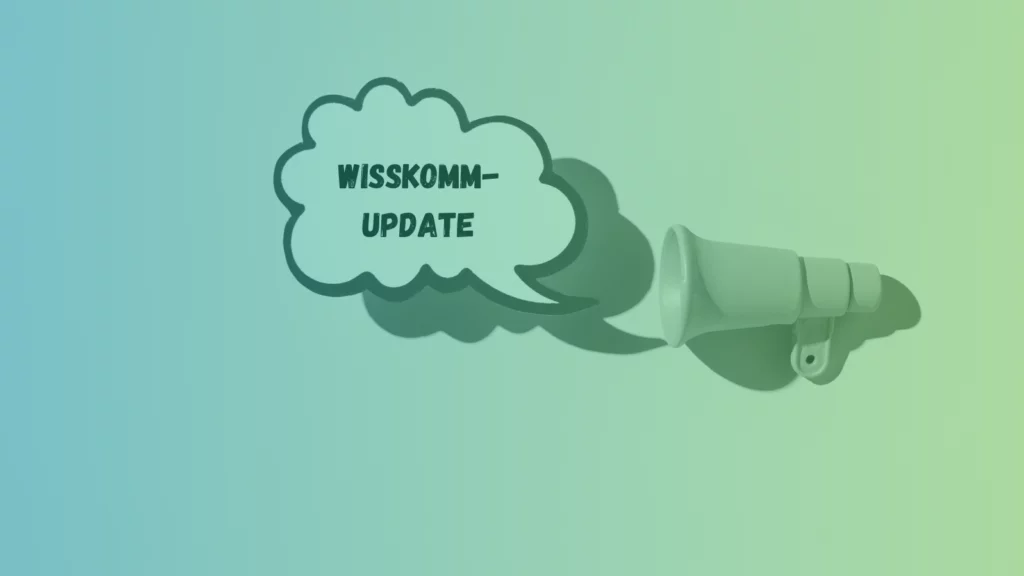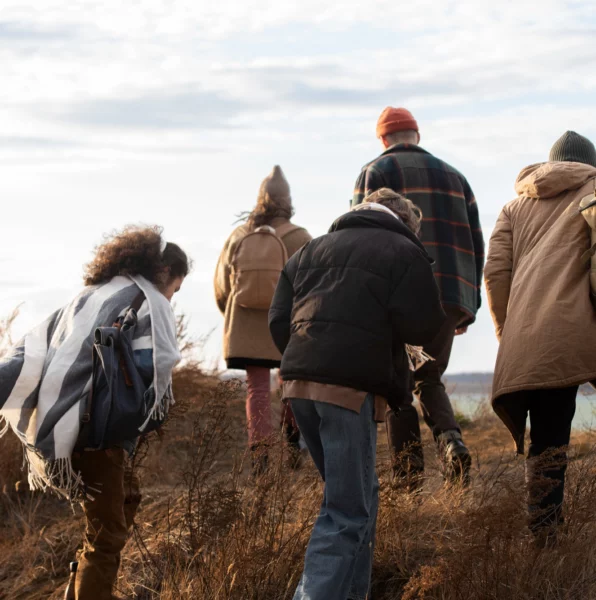Images of distant planets or galaxies, breathtaking chemical reactions or a tiny seed growing into a giant tree: All of these can inspire awe. Daniel Silva Luna has analysed how this emotion is used in science communication. In this interview, he explains its ambiguity and complexity.
Confusion or curiosity: Why ‘awe’ is a double-edged sword
Let’s start with a personal question: When was the last time you felt a sense of ‘awe’ towards something related to science?

I think the most recent example was when OpenAI introduced its current o1 model. The new thing about it is this step-by-step verification mechanism. It takes some time to respond, but the answer is so much more thoughtful, reflexive and deep than what the previous models would do. I’ve had a lot of experience with these systems because I’m working on a research project related to AI. Interacting with this new model was completely mind blowing on a couple of occasions. I felt confused and scared and went through a lot of emotions. It felt like: “Oh my God, where is this going? Why is it so ‘smart’? What about all these ethical and moral questions that it raises?”
You describe ambivalent feelings: excitement and amazement on the one hand, unease and fear on the other. How would you characterize the feeling of ’awe’?
I believe that emotions are in the eye of the beholder. Having said that, it is difficult to determine exactly what ‘awe’ is. People experience it very differently in different circumstances. A common way of classifying emotions is according to their valence. We have positive emotions such as happiness or joy and we have emotions that are normally categorised as negative, such as anger, fear or sadness.
In reality, things are often more complicated. People experience happiness with a negative tone or fear with a positive one. Let’s think of someone who goes to watch a horror movie. They experience fear, but they’re also excited at the same time. Awe is usually described in such an ambiguous way as well. In certain circumstances, people experience it as a positive, wonderful and inspiring emotion. Likewise, in certain occasions this emotion is tinged with a sense of fear, anxiety, and apprehension.
In my view it is also a cultural phenomenon. My first language is Spanish. We usually translate the word ‘asombro’ for ‘awe’. However, in my experience, ‘asombro’ doesn’t capture all the nuances of the English word ‘awe’. Rather, I think of it more linked to surprise or to describe something cool. In German you would use ‘Ehrfurcht’ and in French ‘admiration’, which only reflect certain aspects of the English term. Words have their own history and meanings. With translations, we miss out on all the cultural nuances.
You have analysed the role of this emotion in science communication. What did you look at?
You said that inspiring ‘awe’ is common in science communication. How is it used by practitioners?
It’s used to communicate science in different ways, depending on the field. Practices of science communication like science journalism, science festivals or museums have their own ways of trying to get people to experience and express this emotion.
An exemplary case is astronomy. Images taken by the Hubble Space Telescope or the James Webb Space Telescope of a planet or galaxy far away might evoke wonder, interest and reflection on how small it is to be a human being on this little rock of a planet. In science festivals, typically you see a lot of explosions. There’s always someone putting on a big ‘kaboom’ for kids, trying to surprise and to inspire them with the wonder of a chemical reaction and have a great time at the museum.
Varieties connected to curiosity are also common. You see this in children when they discover something new and want to engage with it, like when you explain to them: “Millions of years ago there were dinosaurs around the planet and one day they disappeared.” The reaction would be like: “Oh, I want to learn more about this!“
On the one hand, ‘awe’ can arouse curiosity and engagement. On the other hand, it may be used to generate respect and esteem or even a fear of the magnificence of science. Is this emotion a double-edged sword?
Yes, absolutely. There are versions of awe in our culture that I would consider quite toxic. In my work I have recognized a version that relates to a sense of blind admiration for science and the scientists behind this; for the Oppenheimers and Einsteins of this world. I think that this is not driven by curiosity or interest, but rather by submitting to someone’s genius. That’s something I am not a huge fan of personally, but that is still how science is often communicated. It’s about the exaltation of certain people, not just in history, but also today. Take, for example, Elon Musk and the blind faith many people put in his companies and technologies.
It’s important to think about what kind of emotions we want to evoke in science communication. One of my primary concerns at the beginning of my PhD thesis was a sense of “Oh well, these emotions of awe and wonder are great because they get more people to engage with science.” But the question I ended up developing was: What kind of engagement do we want? Do we want blind admiration? Do we want scientism? Or do we want to be more curious, more critical, more democratic, more participatory? Aren’t these the qualities that we often say we want to promote in science communication? In reality, however, we see that one-sided communication and thinking still permeates the way these and other emotions are often used.
Do you observe changes in how ’awe’ is being used?
That’s a difficult question to answer. I do feel that the discourse around emotions in science communication is moving towards being more participatory, democratic, engaging, open and critical towards science. In science communication journals you see discussions about intersectionality, equity, and inclusion. But I don’t know if that’s reflected in what’s happening on the ground. When I consume science communication like any other person, listening to science podcasts and going to a science museum or a festival, I don’t necessarily get a sense of more participation and engagement. But it’s hard to tell. It’s really difficult to get a feel for, and perhaps even measure, how the field is developing.
Your current research focusses on AI and emotions and engagement. What is the project about?
We argue that large language models can help people with their work. For example, we think it’s important to be transparent about their use. Many people still feel uneasy about using these tools. However, in private conversations, many admit to using them without disclosing it, despite knowing how helpful they can be. AI could save us so much time on summarising, editing, translating, and all sorts of administrative tasks that can be tedious at times. Moreover, it can level the playing field for non-native English speakers who have to work in this language. That’s why it is necessary to talk about how we should use these systems.
Another part of our research is trying to find out how people are using these systems and what they think of and feel for them. To do this, we will carry out a series of experiments and surveys. We want to ask science communicators how reliable they think these systems are. We also want to know: What are the emotions people have when they talk about AI? Is it fear, anger, frustration, joy or pleasure?
You are one of the guest editors of the Journal of Science Communications’ (JCOM) special issue on emotions and science communication. Is the topic currently being given more relevance in research?
In recent decades, many social sciences have undergone an ‚affective turn‘. Emotions have come to be seen as essential to understanding how people think and behave. Research from anthropology, sociology, psychology, and other fields has taught us that emotions permeate every single aspect of human life, from social interaction to cultural exchanges to cognitive processing.







